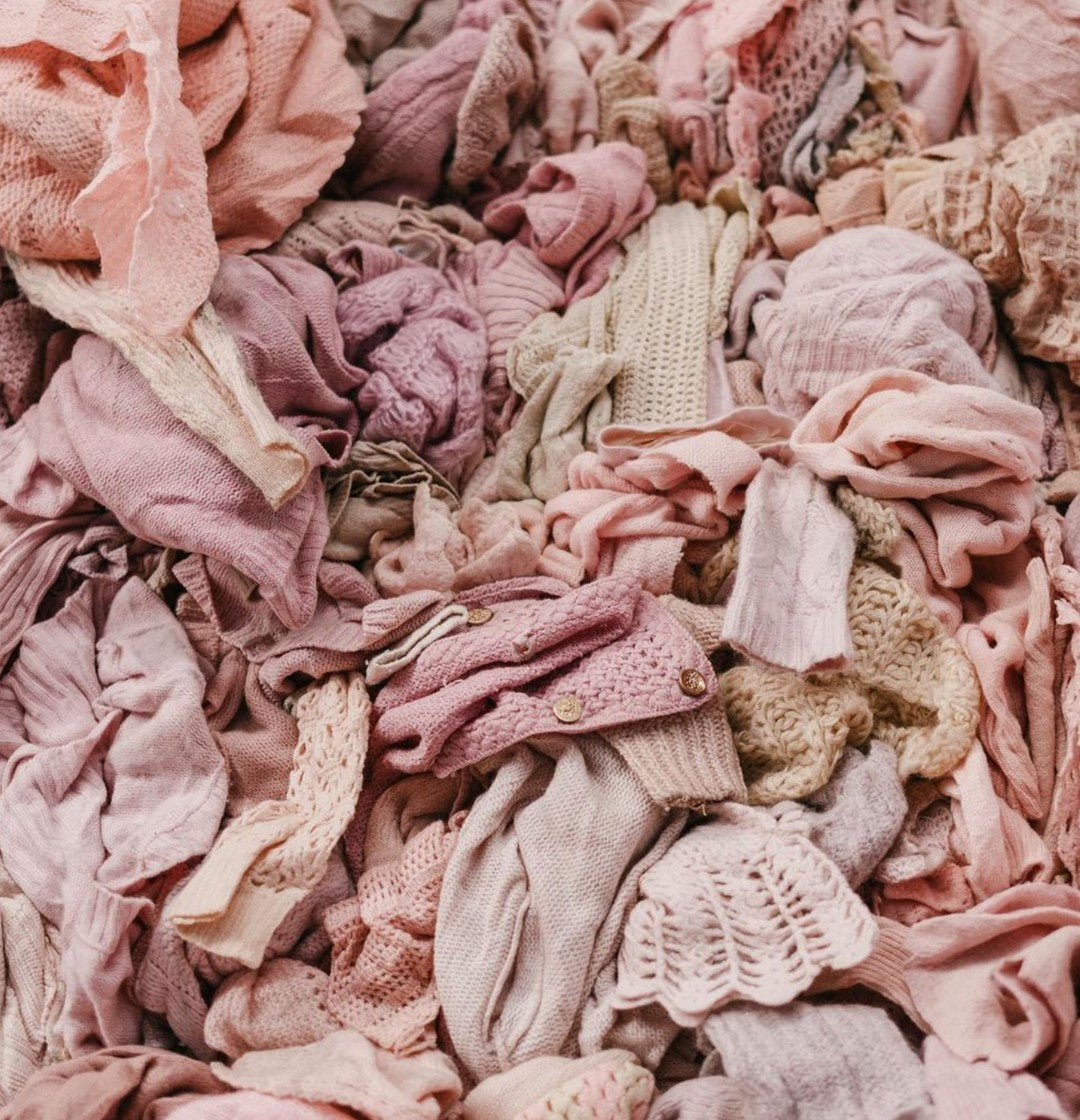99% of the things we buy are thrown away within 6 months. A fact that isn’t disappearing anytime soon as manufacturing continues to get faster and cheaper, and the clothes we buy are worn less and discarded sooner.
As part of WRAP’s Textiles 2030 mission to make the textile industry a better and more eco-friendly place, we were recently invited to a local family-owned textile recycling centre in South East London to find out just what happens to those unwanted clothes that we pile into our kerbside textile recycling bank. It’s good news though, most of our textile ‘waste’ is passed on to others across the world who need it most.
Are you planning a wardrobe clear out anytime soon? Take note of the below and together we can prolong the life of our clothing that little bit longer.
☔ SAY YES TO THE PLASTIC BAG
For this one time only! Contamination is a HUGE issue at the curbside textiles collection banks and the clothes protected in plastic bags are the easiest to sort whilst having the highest chance of being given a new home. Mouldy and slightly damp clothes, loose garments and rain damage can ruin a whole container yet this can be so easily avoided by making sure your clothes are in a secure waterproof bag.
🧽 CLEAN CLOTHES
Although clothes can be washed once donated, clean clothes are so much more valuable to charity shops and save a lot of time for recycling facilities. Everything at the facility we visited was sorted by skilled workers who arrange the clothes into over 80 different categories ready to be shipped to the otherside of the world or sold locally just around the corner. From the most damaged rags to the most premium unworn clothing still with labels, everything had its own place. We even found a Burberry trench on our visit!

🥾 DON’T THROW AWAY YOUR WELLIES
Charity shop? Friends? Family? Whatever you do, don’t throw them in the textile bank. It turns out that the wellington boot is so difficult to reuse and recycle as there’s no end market for them (most of this centres waste went to). At BEEN London HQ we’re now on a mission to find out what we can do with all of this welly waste but in the meantime try and donate your pair to a good home or local charity shop before throwing them into the bank. PS: Shoes to be donated in pairs wherever possible!
🪡 QUALITY OVER QUANTITY
Fakes, damaged and stained clothing, synthetic materials, missing buttons, broken zips. These are all things to bear in mind when making your way through unwanted clothes or purchasing new ones. Although all can be reused in one way or another (whether that’s through repair, energy from waste or insulation and mattress fillings) make sure to look after your wardrobe so we can prolong its life as much as possible. Over 60% of the material the recycling facility receives goes straight into the lowest grade which can definitely be reduced.
🔒 PROTECT YOUR LOCAL BANK
Recycling banks are incredibly expensive to make and maintain yet so easily damaged by weather, local crime and everything in between. Due to the current volume of clothes being donated, an average clothing bank is emptied nearly three times a week! Make sure to ring the number on your local textile bank if you notice that it’s damaged, overflowing or vandalised, we don’t need any more clothes being made unwearable for no reason.






